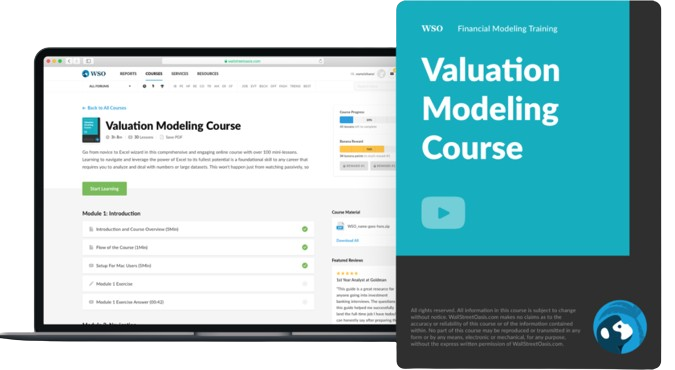Enterprise Value to Revenue Multiple
Used to value a company, typically to determine whether it makes an attractive equity purchase or acquisition.
What is the Enterprise Value to Revenue Multiple (EV/R)?
Enterprise Value (EV) to Revenue Multiple is a metric used to value a business by measuring its EV (total debt + equity - cash & cash equivalents) divided by revenue.
This multiple is used to measure whether or not a company is undervalued, specifically for acquisition purposes. It is also commonly referred to as the EV to sales multiple.
The EV to revenue multiple is used to value a company, typically determining whether it makes an attractive equity purchase or acquisition.
It is commonly used by financial sponsors, investment bankers, and other investment professionals.
The multiple incorporates both market sentiment and key balance sheet items such as debt and cash and cash equivalents.
Enterprise value is the combination of a company’s debt and equity. This value can be calculated by adding a firm's total capitalization plus its debt, less cash, and cash equivalents.
Key Takeaways
- Ev/revenue multiple is a valuation metric that divides a company's EV by its LTM revenue.
- Ev contains market capitalization plus net debt.
- It is important to use a normalized revenue number when calculating this multiple.
- EV/revenue is a valuable multiple when evaluating companies that are not yet profitable or if the particular company's capital structure should be considered.
Example of calculating EV to Revenue
For this example, let's assume Company A has a market capitalization of 50 billion and a net debt (total debt - cash) of 20 billion. Additionally, company A had an LTM revenue of 7 billion.
The calculation of their Ev to Revenue multiple would be as follows:
- (Market cap of 50 billion + 20 billion of net debt) = EV of 70 billion
- 70 billion / LTM revenue of 7 billion
- Ev/revenue multiple of 10x
The financial statements for all publicly traded companies are published via SEC guidelines. Sifting through the latest 10-K or 10-Q can be of great value while analyzing a company, especially for doing in-depth valuation analysis.
It is also extremely important not to mix up a company's previous and current financial figures. Using revenue from two years ago with today’s debt level and market capitalization or vice versa could ruin the results found.
Why Use EV to Revenue Multiple?
Using valuation metrics when conducting due diligence on a company is common and extremely valuable. Many different multiples and ratios are used for this, so why use EV/revenue?
The use of enterprise value as a variable in valuation analysis is of great value because it includes the business's capital structure in the equation. Capital structure is a company's mix of debt and equity to run its business.
This structure can vary greatly from company to company across sectors, sub-sectors, business cycles, etc.
In theory, including the debt a company has, means that to have the same Ev/revenue multiple, it must have used that debt to generate higher revenue. This can help weed out companies that have not been able to effectively use debt to drive revenue and, hopefully, earnings growth.
Additionally, many companies may garner investment considerations that are not yet profitable. Names in the tech industry and high-growth companies come to mind.
Using revenue to determine valuation can give us quantifiable statistics and multiples on the companies mentioned above. That way, some metrics can be used consistently across comparable companies. Whether or not they are profitable at the time.
This metric differs from other commonly used valuation metrics like EV/EBIT and Price/Earnings.
EV/EBIT eliminates the effects of a company's capital structure on its earnings by taking earnings before the interest payment.
Price to earnings or P/E ratio takes a company's current market price per share, divided by their LTM earnings per share of EPS.
Both of these metrics have their respective place when determining valuation and Ev/revenue. However, the company in question and its specific circumstances determine which metrics are most useful for the given situation.
Researched and authored by Charlie Fair l LinkedIn
Free Resources
To continue learning and advancing your career, check out these additional helpful WSO resources:




or Want to Sign up with your social account?